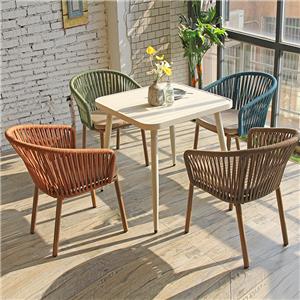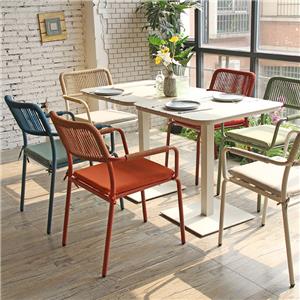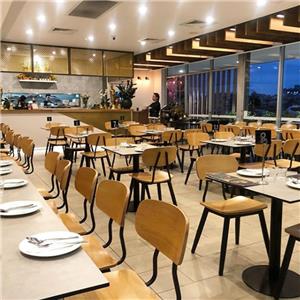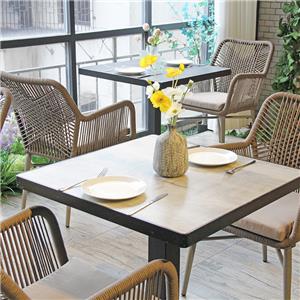How To Choose Chairs And Tables For Outdoor Restaurants?
In the outdoor restaurant industry, tables and chairs are not only the carrier for customers to dine, but also an extension of brand image. A carefully designed and high-quality outdoor tables and chairs can not only enhance the customer experience, but also enhance the competitiveness of the restaurant. However, facing the dazzling array of products in the market, how to choose tables and chairs suitable for outdoor environments has become a challenge that restaurant operators must face. Below, CDG Furniture will discuss five aspects: material selection, space planning, style adaptation, maintenance and management, and safety standards to provide practical and commercially valuable solutions for restaurant operators.
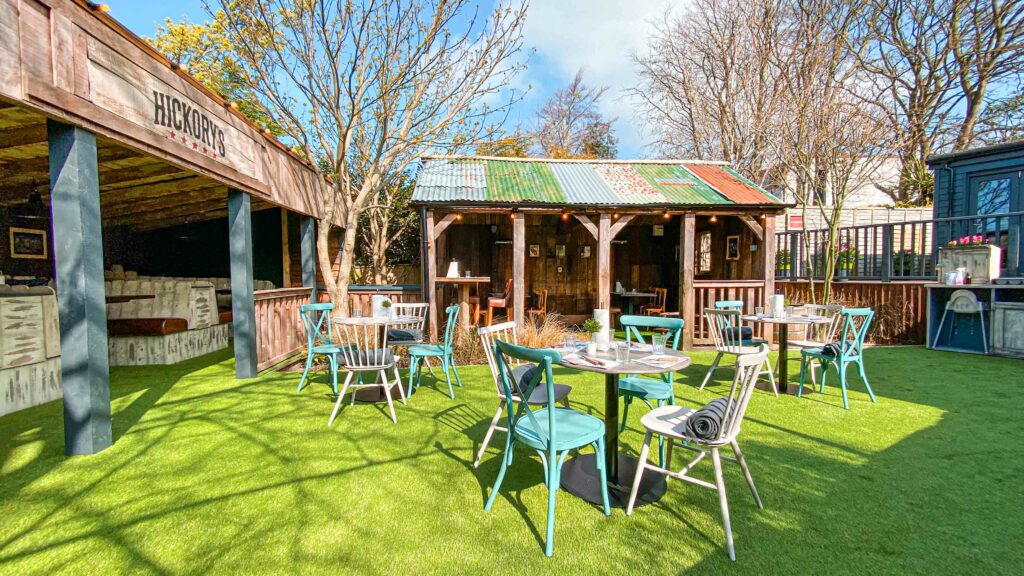
1、 Material selection:
Metal material
Aluminum alloy and powder coated steel are the mainstream choices, with the former having strong corrosion resistance (salt spray testing exceeding 1000 hours) and the latter having a load-bearing capacity of over 200kg. For example, the American Outdoor Furniture Standard ASTM F2282 requires metal parts to have a thickness of ≥ 1.2mm and welding points to pass 20000 opening and closing tests. However, attention should be paid to the thermal conductivity of metals, and insulation pads should be used in conjunction with them in tropical regions.
Solid wood category
Teak contains natural siliceous materials and has a corrosion resistance level of Class 1 (EN 350 standard), but there is a problem of color difference in the annual rings. Modified wood such as acetylated pine (Accoya) can reduce water absorption by 80% through molecular restructuring, making it particularly suitable for seaside restaurants. It is recommended to use FSC certified wood that meets the requirements of the European Union Timber Regulation (EUTR).
Synthetic material
High density polyethylene (HDPE) rattan furniture has a UV resistance rating of 8 (ISO 4892 standard) and a temperature resistance range of -30 ℃ to 70 ℃. The transmittance of the new polycarbonate desktop is controlled at 30% -40%, which can create light and shadow effects while avoiding glare problems.

2、 Space planning:
Dimensional standards
The minimum width of a single seat is 60cm, and the distance between two seats should be maintained at 75cm (in accordance with EN 16121 ergonomic standards)
The width of the passage must be ≥ 110cm to accommodate wheelchair access, and the main passage is recommended to be above 150cm
Circular dining table with a diameter of 90cm, suitable for 4 people, expandable to 6 people at 120cm
layout policies
Mixing fixed and modular combinations, such as the "Magic Cube System" designed by TAPIS in Spain, can achieve 12 layout changes
The street facing area adopts adjustable guardrails (with a height adjustment range of 80-120cm) to balance visibility and safety protection
The projection area of the sunshade should exceed the edge of the dining table by 30cm, and the wind resistance level of the umbrella ribs should reach level 6 (ISO 5970)
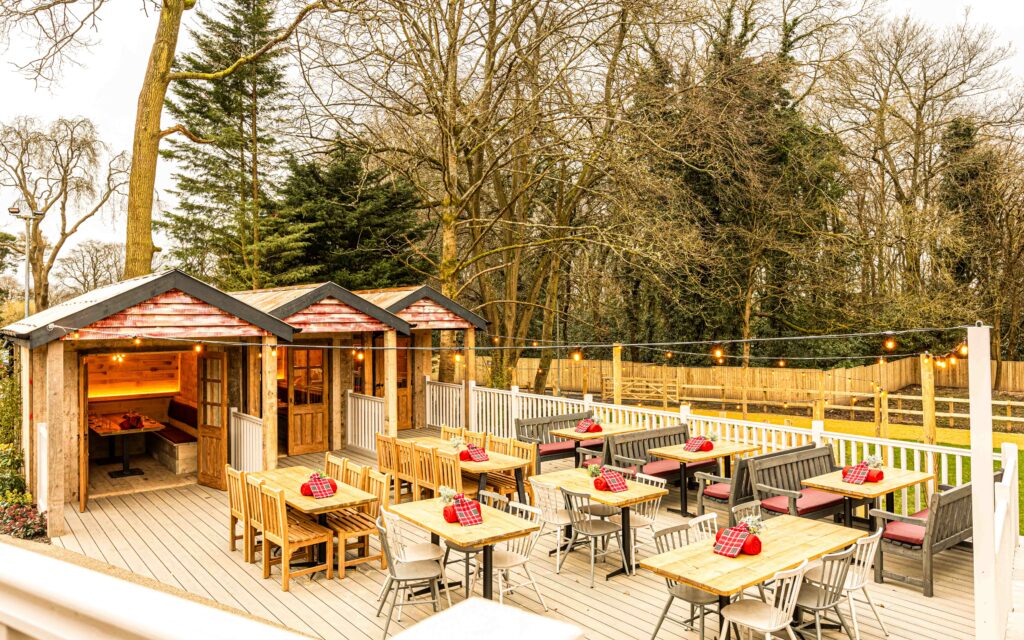
3、 Style creation:
Theme adaptation
Recommended for industrial style: cast iron base paired with recycled wood tabletop, with 3mm expansion joint reserved at the joint
Mediterranean style painted outdoor chairs, tables, and furniture suitable for blue and white color matching, with color fastness reaching level 4 (AATCC 16 standard)
Modern minimalism should choose an anodized aluminum frame, paired with a 2cm thick plastic wood tabletop
4、 Maintenance system:
Cleaning procedures
Metal parts should be wiped with a cleaning agent with a pH value of 6.5-7.5 every month
Apply specialized maintenance oil (including 15% flaxseed oil) to wooden products every quarter
Use a soft bristled brush to clean the gaps in rattan furniture and avoid the impact of high-pressure water guns
Storage solution
The humidity of winter storage environment should be controlled at 45% -55%
When stacking storage, EVA foam cotton should be used for spacing, with a pressure of ≤ 50kg/m ²
Intelligent monitoring system can track warehouse temperature and humidity in real time (accuracy ± 2% RH)
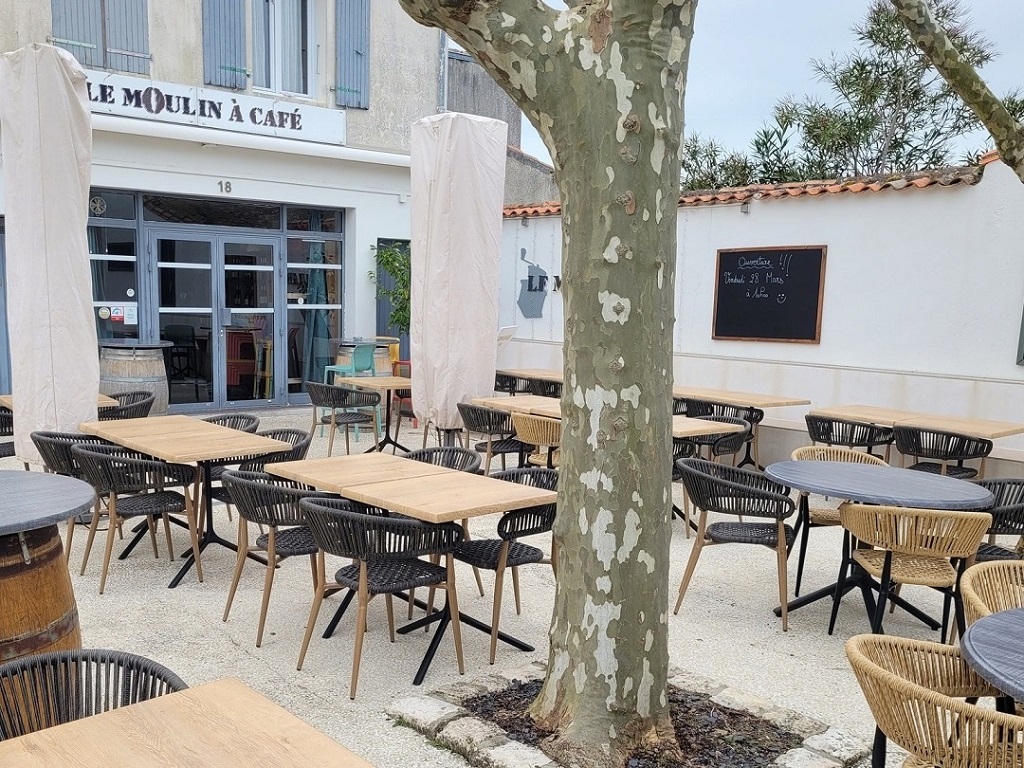
5、 Safety regulations:
Stable structure
Check whether the connection of the table and chair frame is tight, whether there are cracks or virtual welding at the welding points, whether the screws and nuts are tightened, and whether the wooden table and chair mortise and tenon structure is tightly fitted to avoid shaking and collapsing during use. Frequent moving tables and chairs should have thicker legs or increased bottom support area, such as changing from three legged support to four legged support, to enhance stability.
Corner processing
The corners of tables and chairs should be polished smooth to prevent customers from accidentally colliding and getting injured, especially in family friendly outdoor restaurants with frequent children's activities, it is even more important to ensure that there are no sharp corners. Plastic tables and chairs can be directly designed with rounded corners during mold formation. Wooden and metal tables and chairs need to be finely polished with sandpaper and coated with protective paint after later polishing to ensure safety and aesthetics.
Restaurant operators need to carefully consider the materials, design, safety, and cost when selecting outdoor dining chairs and tables. Only by carefully matching them can they create a comfortable and pleasant dining corner for diners in the outdoor world, allowing the restaurant to always exude unique charm in the changing seasons.

